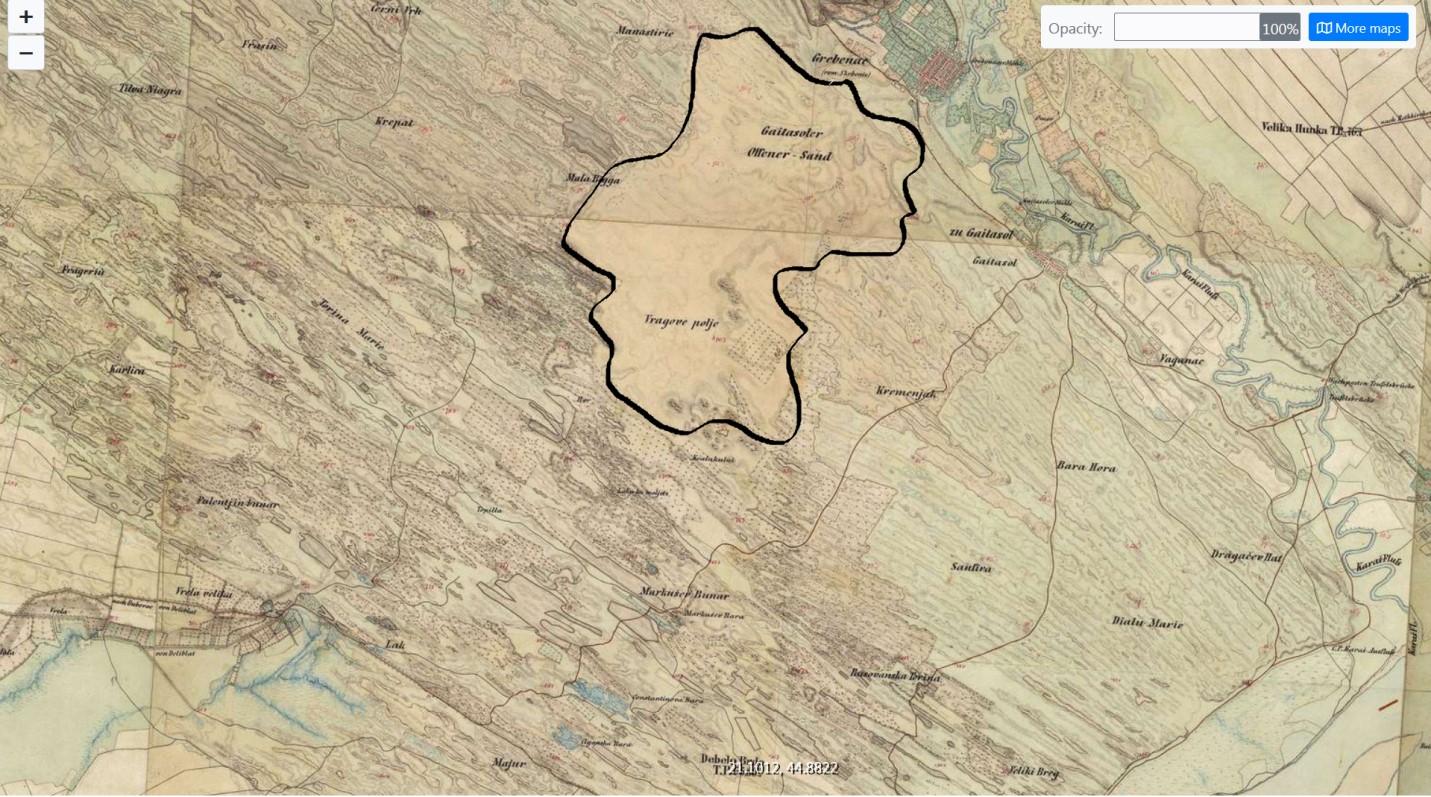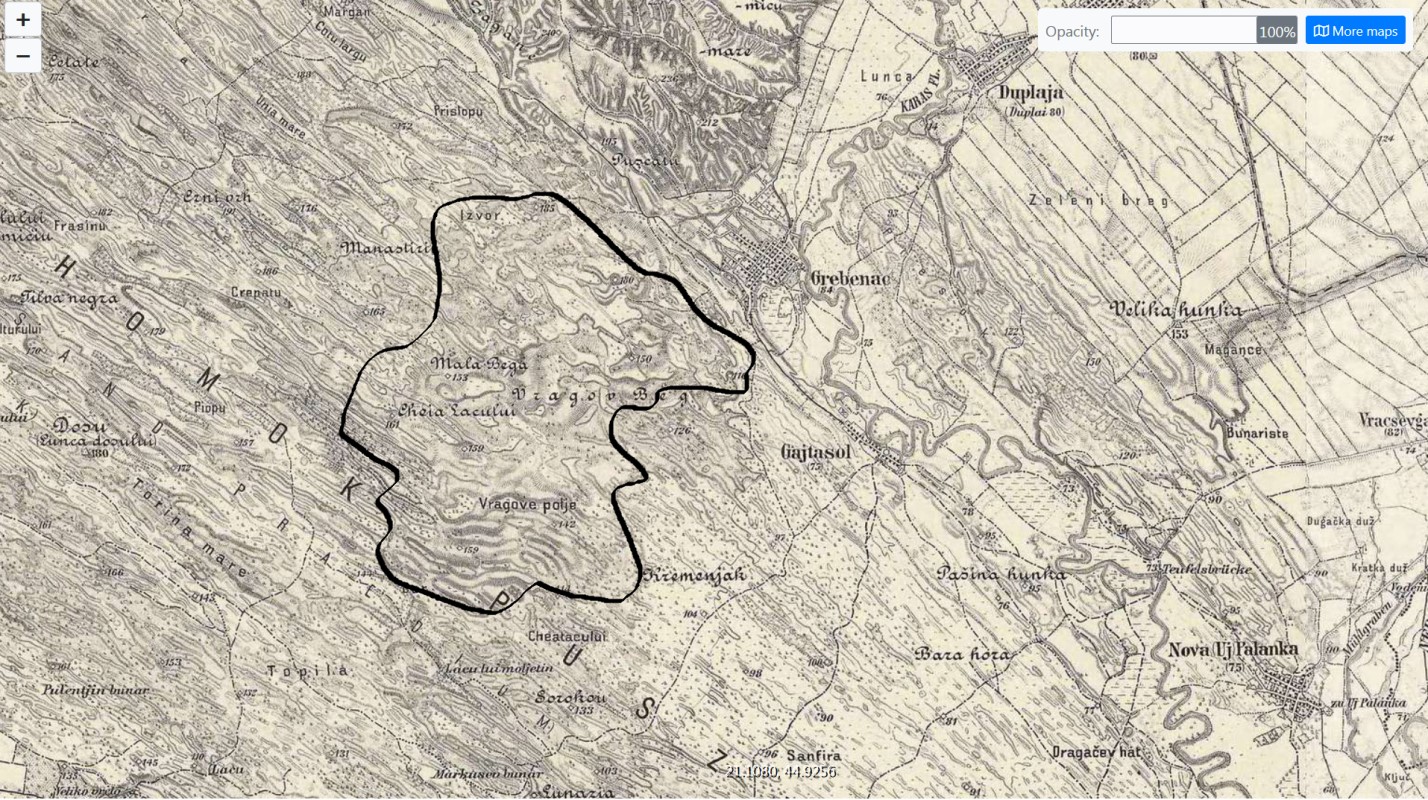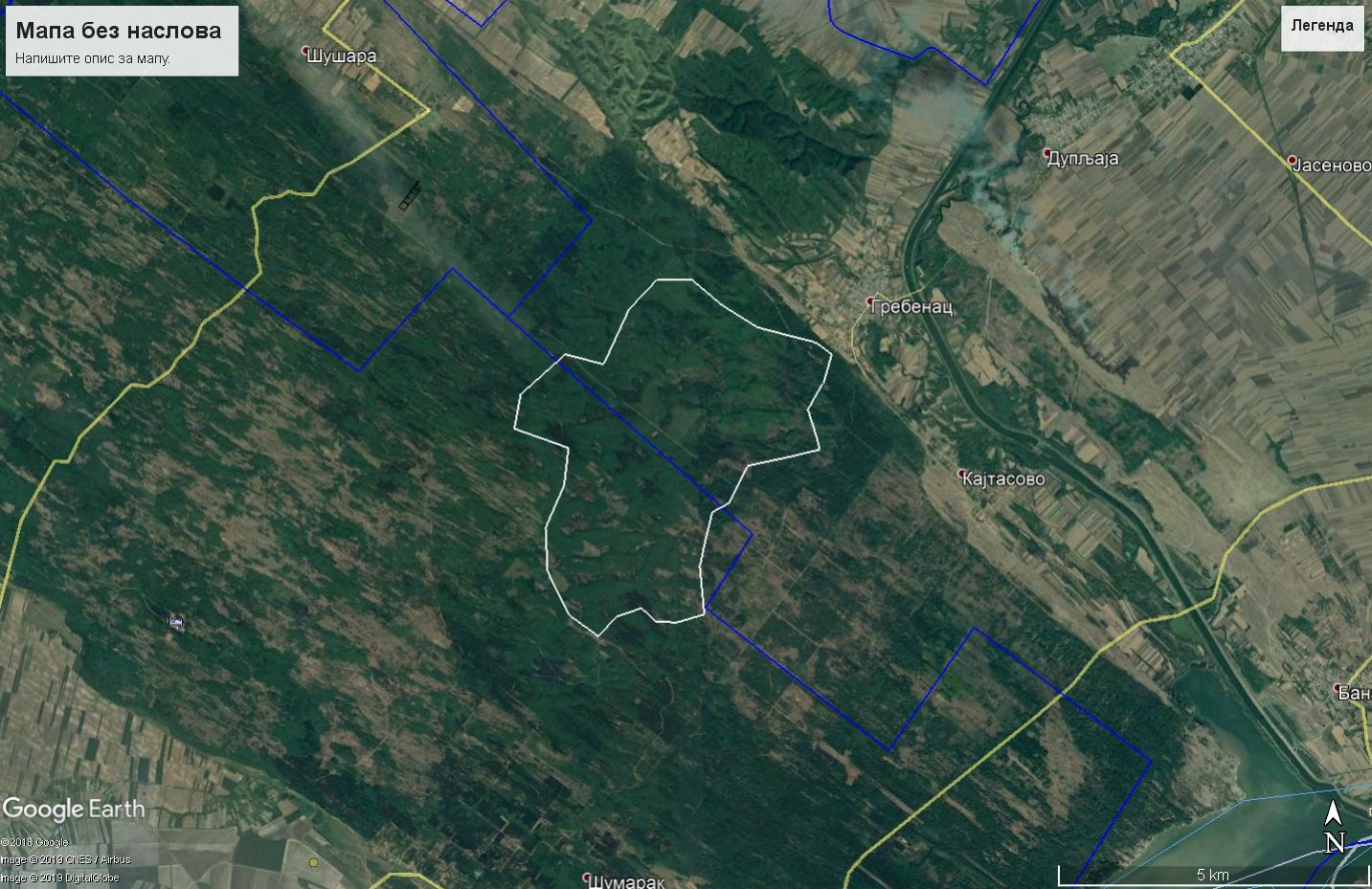Institution/Author: Provincial Institute for Nature Conservation, Novi Sad/Nikola Stojnić
Deliblato sands is the biggest continental sand area in Europe. Regarding the history of human activities in the Deliblato Sands area, forestry was one of the basic activities. Primarily it was cultivation of allochthones species of trees of Black locust (Robinia pseudoaccacia), Scots pine (Pinus silvestris) and Black Pine (Pinus nigra) on natural grassland and sandy habitats since XIX century. These species, mainly Black locust, besides plantation, later on spread spontaneously. Therefore, large proportion of Deliblato Sands, former area of valuable grassland and sandy habitats turned into plantation. Most visible area of this process is shown on the map in this case study. According to recognizable places (e.g. Grebenac village), toponyms and through comparison of maps, it is calculated that area of 1648 ha is from open sand habitats changed to mosaic of grasslands, bush and forest habitats between 1819-1869 and 1869-1887, and since then until today, they are almost completely changed to forest plantation dominated by Black Locust (Robinia pseudoaccacia). Possible reasons for upward or downward trends are afforestation, invasive species, grazing abandonment. Specific measures of open sandy habitats are needed, which are mainly prescribed but not implemented in the field.
According to recognizable places (e.g. Grebenac village), toponyms and through comparison of maps, in GoogleEarth is calculated that area of 1648 ha is from open sand habitats changed to mosaic of grasslands, bush and forest habitats between 1819-1869 and 1869-1887, and until today, they are almost completely changed to forest plantation dominated by Black Locust (Robinia pseudoaccacia).


